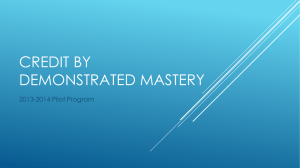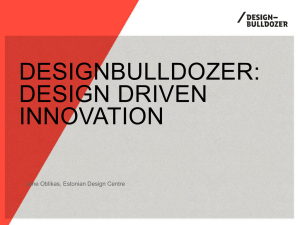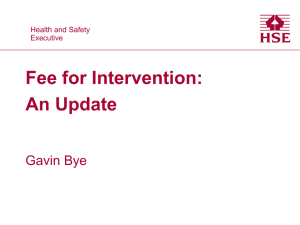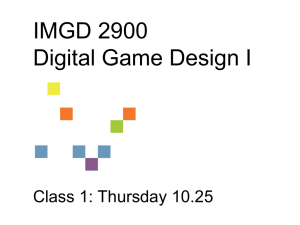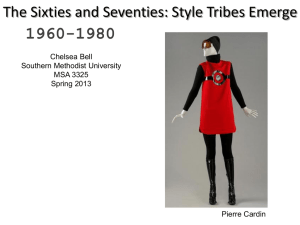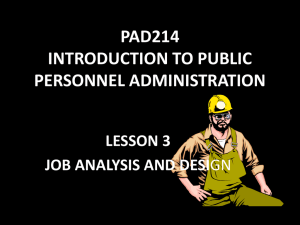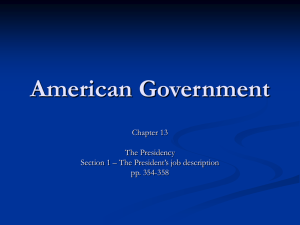Session 4 - Designers
advertisement
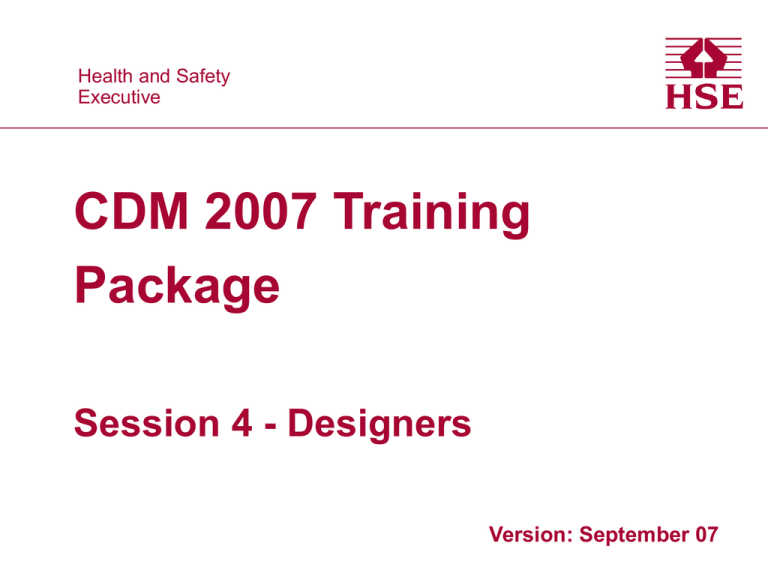
Health Healthand andSafety Safety Executive Executive CDM 2007 Training Package Session 4 - Designers Version: September 07 Who are designers? (1) • • • • • A ‘designer’ has a wide definition under CDM 2007 If you design or specify building work, then you are a designer with duties under CDM Duties apply to all projects, including nonnotifiable and domestic It includes people who prepare – Drawings – Design details, analysis and calculations – Specification and Bills of Quantities The design could be on paper, computer or verbal CDM 2007 Designers – Slide 2 Who are designers? (2) • Designers include – Civil and structural engineers – Building services engineers – Those specifying or purchasing materials – Temporary works designers – Interior fit out designers – Clients who specify – Design and construction contractors – Statutory bodies that require features that are not statutory requirements • Statutory requirements are exempted i.e. Building Regs requirements are not designs under CDM 2007 CDM 2007 Designers – Slide 3 Who are designers? - Overseas designers • Where the design work is undertaken by oversees designers, the designers duties under CDM 2007 falls on: – Person who commissions it if in GB or – The client for the work CDM 2007 Designers – Slide 4 Duties on designers (1) • Designers have to: – Ensure clients are aware of their duties – Make sure they (the designer) are competent for the work they do – Co-ordinate their work with others as necessary to manage risk – Co-operate with CDM co-ordinator and others – Provide information for the health and safety file CDM 2007 Designers – Slide 5 Duties on designers (2) • Designers have to avoid foreseeable risks SFAIRP by: – Eliminating hazards from the construction, cleaning, maintenance, and proposed use (workplace only) & demolition of a structure – Reduce risks from any remaining hazard – Give collective risk reduction measures priority over individual measures CDM 2007 Designers – Slide 6 Duties on designers (3) Designers must also: • Take account of the Workplace (Health, Safety & Welfare) Regulations 1992 when designing a workplace structure • Provide information with the design to assist clients, other designers, & contractors • In particular – inform others of significant or unusual/ “not obvious” residual risks CDM 2007 Designers – Slide 7 Duties on designers (4) • Designers have to be given relevant information by the CDM co-ordinator • Risks which are not foreseeable do not need to be considered • CDM 2007 does not require “zero risk” designs • Amount of effort made to eliminate hazards should be proportionate to the risk CDM 2007 Designers – Slide 8 HSE’s expectation of Designers apply the ERI(C) principles (1) Eliminate hazards • By experience • By red amber green lists (optional) • By challenging existing practice • By considering implications of their actions • By talking/listening to contractors • By complying with Workplace (Health, Safety and Welfare) Regulations 1992 Reduce remaining risks - Collective measures - Individual measures CDM 2007 Designers – Slide 9 HSE’s expectations of designers – apply the ERI(C) principles (2) Inform others • Provide relevant information to project team: other designers, CDM co-ordinator, contractors • In particular: highlight significant, “not obvious” risks, & those that are difficult to manage CDM 2007 Designers – Slide 10 Designing out risk – example of what can be done Simple design measure to reduce risk CDM 2007 Designers – Slide 11 Designing out risk – example of what not to do Inherent risks for future maintenance of flue pipe CDM 2007 Designers – Slide 12 Designers - Information • Provide the right information to the right people at the right time • How to inform – Method of informing is optional – Notes on drawings – Written information with the design – Suggested sequence of construction (only if not obvious) • If in doubt – discuss it CDM 2007 Designers – Slide 13 Designers – co-operation • A more managed approach will be necessary for larger projects: – integrated team involving designers, principal contractor and other relevant contractors – the appointment of a lead designer, where many designers are involved – agreeing a common approach to risk reduction during design – meetings of the design team (including the CDM coordinator) with contractors, and others – regular reviews of developing designs – encourage site visits, so designers can see how risks are managed on site and vice versa CDM 2007 Designers – Slide 14 Designers - Paperwork • Competent designers eliminate hazards and reduce risks – manage the risk, not paperwork. • Design risk assessments (DRAs) are seen by many as unhelpful and should be discouraged – Just say no to thoughtless DRA but yes to eliminating hazards • CDM 2007 does not require designers to produce copious amounts of paperwork detailing generic hazards and risks CDM 2007 Designers – Slide 15 Designers - Records • Designers under CDM 2007 are not legally required to keep records of the design process • But – Brief records why key decisions were made will be helpful when designs are passed to another, to prevent decisions being reversed for the wrong reasons CDM 2007 Designers – Slide 16 Designers – design review • A process of design review will help to ensure buildability, usability, & maintainability • Designers should involve the contractor when reviewing buildability • Designers should involve the client (or building operators) when reviewing usability and maintainability • Involve the CDM co-ordinator if project is notifiable CDM 2007 Designers – Slide 17 Additional duties for notifiable projects • Check that the client has appointed a CDM co-ordinator • Only ‘initial’ design work is permitted until a CDM co-ordinator has been appointed • Co-operate with the CDM co-ordinator, principal contractors and with other designers or contractors so all can confirm with their CDM duties • Provide relevant information for the health and safety file CDM 2007 Designers – Slide 18 Designers - “Do not……” • And never have been asked to control risk on site - they can only influence what is within their control • • Take into account unforeseeable hazards and risks • Specify construction methods, except where the design requires a particular construction sequence • Exercise a health and safety management function over contractors or others • Have to consider trivial risks Design for possible future uses of structures that cannot reasonably be anticipated from their design brief CDM 2007 Designers – Slide 19 Designers – Key messages • If you design or specify building work, then you are a designer with new duties under CDM • Competent designers eliminate hazards and reduce risks – manage the risk, not the paperwork • Design for safety and health for those that build, use, maintain and demolish – it’s safer by design • Tell others about significant risks which remain – give the right information to the right people at the right time CDM 2007 Designers – Slide 20


